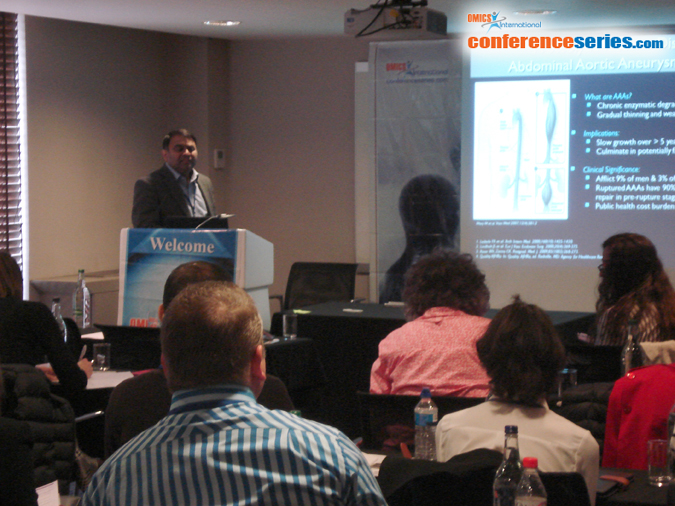
Anand Ramamurthi
Cleveland Clinic, USA
Title: Cathepsin-K antibody-conjugated pro-matrix regenerative nanoparticles for abdominal aortic aneurysm repair
Biography
Biography: Anand Ramamurthi
Abstract
Abdominal Aortic Aneurysms (AAA) involve slow dilation and weakening of the aortic wall due to chronic breakdown of matrix proteins, such as elastin, via an overexpression of matrix metalloproteases (MMPs), specifically MMP-2 and -9. Auto-regenerative repair of disrupted elastic matrix by smooth muscle cells (SMCs) at the AAA site is intrinsically poor and together with chronic proteolysis prevents buildup of new, intact elastic matrix to enable AAA growth arrest or regression to a healthy state. Oral doxycycline (DOX) therapy can inhibit MMPs to slow AAA growth, it has systemwide side-effects and inhibits new elastin deposition within AAA tissue, diminishing prospects for restoring elastin homeostasis and thus arresting/regressing AAA growth. We have thus developed cationic amphiphile (DMAB)-modified nanoparticles (NPs) that unqiuely exhibit pro-elastogenic and anti-proteolytic properties, independent of the encapsulated drug for localized, sustained DOX delivery within AAA tissue at a much lower dose, that we have recently found to augment elastin regenerative repair. To provide greater specificity of NP targeting, we conjugated the DOX-NP surface with an antibody against cathepsin-K, a lysosomal protease that is highly overexpressed within AAA tissue. We determined conditions for efficient cathepsin-K Ab conjugation onto the NP surface, demonstrated improved NP binding to aneurysmal SMCs, the lack of changes to DOX release, and improved pro-elastogenic and anti-proteolytic effects of the cathepsin-K Ab-conjugated DOX-NPs due to improved NP-cell interactions. Ex vivo perfusion studies also indicated significantly greater binding of the modified NPs to the wall of matrix-disrupted porcine aortae. This study has shown that Cathepsin K Ab conjugation is a useful targeting modality for our pro-regenerative NPs. Future studies will investigate NP targeting to the AAA wall in rat model following intravenous or catheter-based infusion to a flow occluded aorta and their efficacy for induced regenerative matrix repair for AAA growth arrest.

